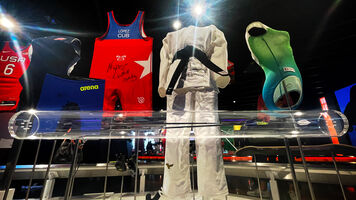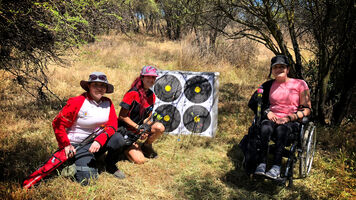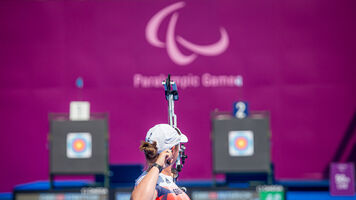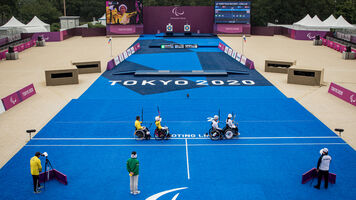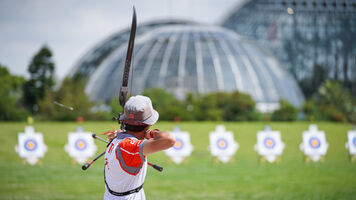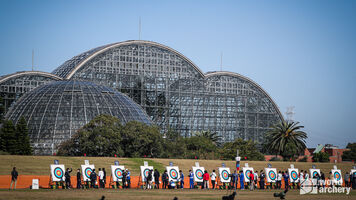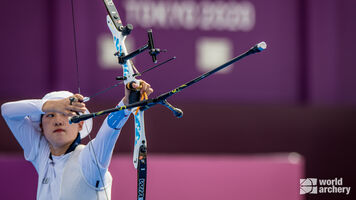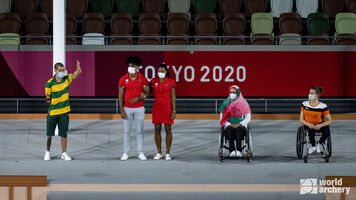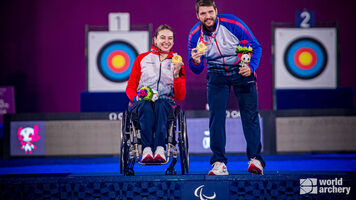Preview: Men’s team at the Tokyo 2020 Olympic Games
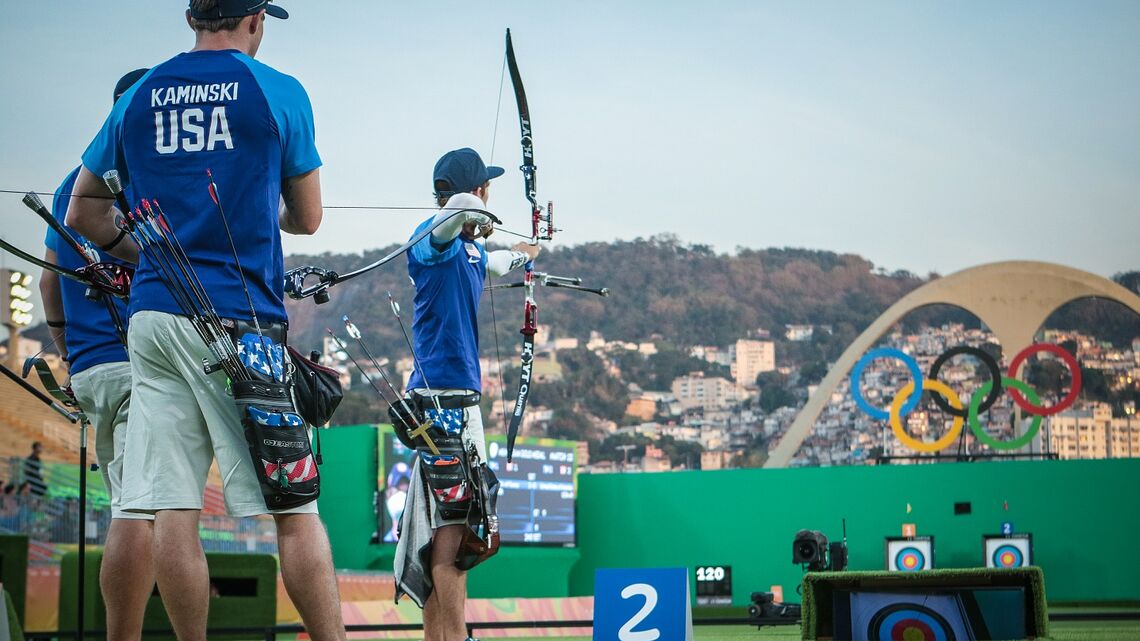
The quality and depth of the recurve men’s team event at the Tokyo 2020 Olympic Games will make for some very disappointed nations come the end of the day on 26 July 2021.
Germany and Spain, the two teams that currently top the world ranking after consistent results at the early stages of the 2021 Hyundai Archery World Cup, didn’t even qualify for the Games. And that’s just because the team event is so exclusive – with only 12 tickets and one of those going to the hosts, Japan.
This year’s world rankings are misleading, too.
Korea, Japan, Chinese Taipei and China (and Indonesia to an extent) haven’t been shooting internationally since the start of the pandemic. They’ll all be expecting results in this competition in Tokyo.
The only thing that’s guaranteed is that there are only three places on the podium – and only one winner.
Key information
What’s happening? The men’s team event at the Tokyo 2020 Olympic Games on 26 July 2021.
What’s at stake? An Olympic gold medal.
Who’s competing? Teams representing 12 nations.
What’s the story? Last-minute qualifiers France, Indonesia and the USA were impressive while booking their tickets in Paris last month. The field is, largely, wide open. At least nine of the 12 nations in the line-up have the potential for the podium.
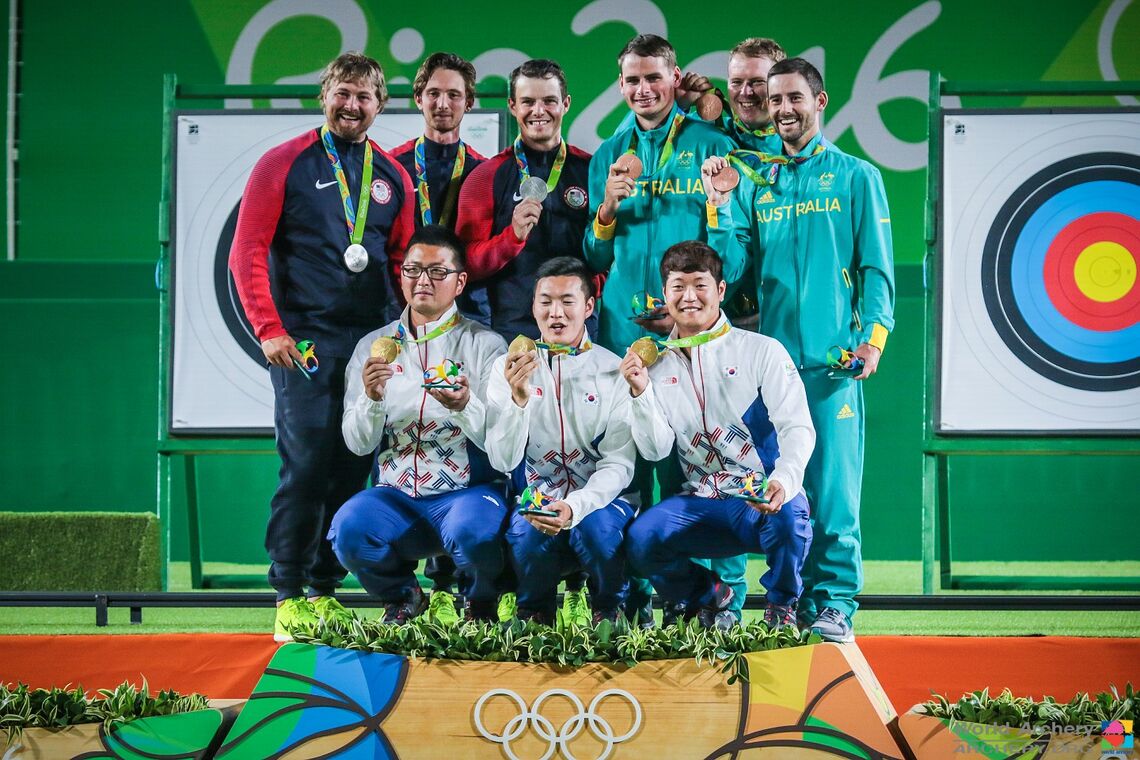
Podium at Rio 2016
 Korea
Korea USA
USA Australia
Australia
World ranking (top 5)
As of the start of the Games on 23 July.
 Germany (not competing)
Germany (not competing) Spain (not competing)
Spain (not competing) USA
USA Netherlands
Netherlands France
France
Favourites
Having won two consecutive silver medals at the Olympics and given the form the team showed at the final qualifier, the USA has to be considered among the top teams in Tokyo. Korea, as a line-up, is individually strong – but Oh Jin Hyek hasn’t always performed well in a rotation and without time to find his rhythm. China is the reigning world champion, while Australia, Chinese Taipei and the Netherlands are all almost locks for the quarterfinals.
Line-up
Nations must qualify teams for the Olympics. The host nation automatically receives a team spot.
 Australia: Dave Barnes, Ryan Tyack and Taylor Worth.
Australia: Dave Barnes, Ryan Tyack and Taylor Worth. China: Li Jialun, Wang Dapeng and Wei Shaoxuan.
China: Li Jialun, Wang Dapeng and Wei Shaoxuan. Chinese Taipei: Deng Yu-Cheng, Tang Chih-Chun and Wei Chun-Heng.
Chinese Taipei: Deng Yu-Cheng, Tang Chih-Chun and Wei Chun-Heng. France: Thomas Chirault, Pierre Plihon and JC Valladont.
France: Thomas Chirault, Pierre Plihon and JC Valladont. Great Britain: Tom Hall, Patrick Huston and James Woodgate.
Great Britain: Tom Hall, Patrick Huston and James Woodgate. Indonesia: Arif Pangestu, Alviyanto Prastyadi and Riau Salsabilla.
Indonesia: Arif Pangestu, Alviyanto Prastyadi and Riau Salsabilla. India: Atanu Das, Pravin Jadhav and Tarundeep Rai.
India: Atanu Das, Pravin Jadhav and Tarundeep Rai. Japan: Takaharu Furukawa, Yuki Kawata and Hiroki Muto.
Japan: Takaharu Furukawa, Yuki Kawata and Hiroki Muto. Kazakhstan: Ilfat Abdullin, Denis Gankin and Sanzhar Mussayev.
Kazakhstan: Ilfat Abdullin, Denis Gankin and Sanzhar Mussayev. Korea: Kim Je Deok, Kim Woojin and Oh Jin Hyek.
Korea: Kim Je Deok, Kim Woojin and Oh Jin Hyek. Netherlands: Gijs Broeksma, Sjef van den Berg and Steve Wijler.
Netherlands: Gijs Broeksma, Sjef van den Berg and Steve Wijler. USA: Brady Ellison, Jack Williams and Jacob Wukie.
USA: Brady Ellison, Jack Williams and Jacob Wukie.
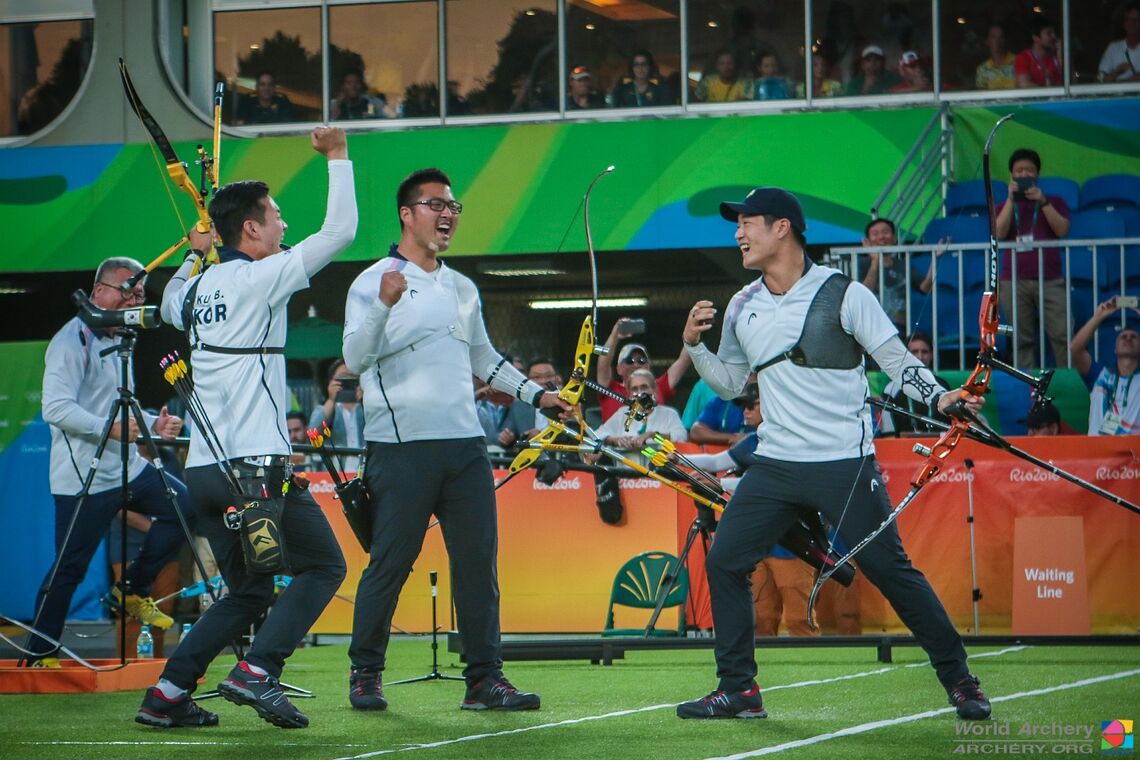
Competition format
Teams are seeded on the combined qualifying result of the three archers. The maximum score for a team in qualifying is 2160 points, the Olympic and world record is 2087 (Korea).
Nations then shoot through head-to-head brackets, in which the winning team in each match advances and the loser is eliminated until a champion is crowned.
Team matches are decided using the set system in which the goal is to accrue five set points. Matches usually last around 25 minutes.
Each match is broken down into sets of six arrows. The teams shoot their set in two rotations of three arrows, one per archer, before alternating to the opposing team. Each nation has 120 seconds to shoot its six arrows.
Once all of the arrows in a set are shot, the nation with the highest total arrow score in that set is awarded two set points. Both nations receive one set point if the total arrow score is tied. The maximum total arrow score in a single set is 60 points.
If the nations are tied on four set points after four sets, the match is sent to a tiebreak.
Each archer shoots one arrow and the nation with the highest score wins the match. If still tied, the nation with the arrow closest to the middle of the target wins the match. (The second, and if necessary third, arrows are compared if the first are an identical distance from the middle.)

 Korea
Korea USA
USA Australia
Australia Germany (not competing)
Germany (not competing) Spain (not competing)
Spain (not competing) Netherlands
Netherlands France
France China:
China:  Chinese Taipei:
Chinese Taipei:  Great Britain:
Great Britain:  Indonesia:
Indonesia:  India:
India:  Japan:
Japan:  Kazakhstan:
Kazakhstan: 
